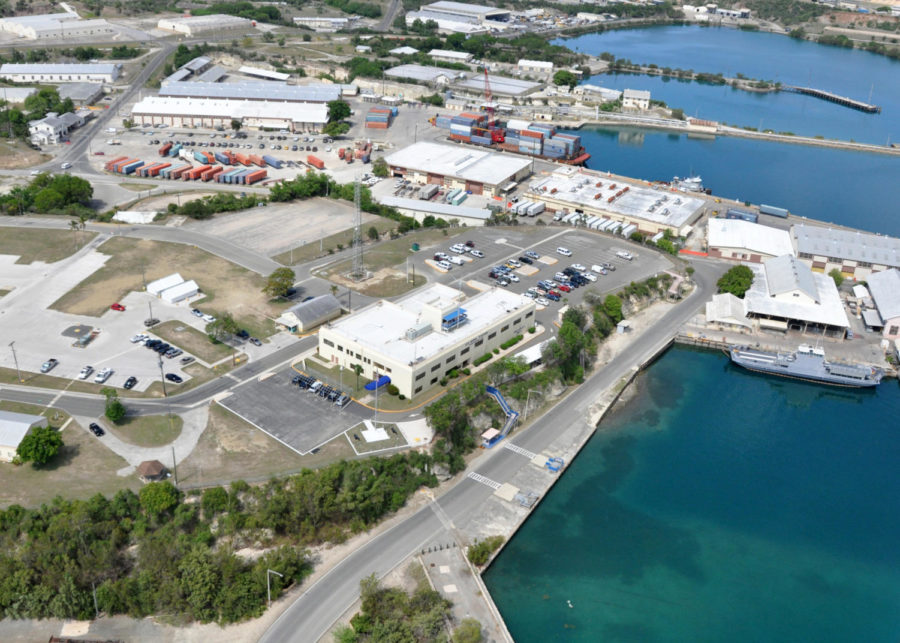The Cuban Harbor that Details 21th Century America
Unbeknownst to some Americans, a harbor in Cuba has shaped American history in a multitude of impactful ways. From its ability to draw international attention and criticism to its tendency to be expensive to maintain — it even drew condemnation from Benedict Cumberbatch, who told the Independent that it was a “dangerous, unnecessary and ineffectual place” — this American Naval base matters to the lives of everyday Americans, despite the fact that its story has never been fully pieced together.
Located in southeast Cuba, the area of Guantanamo Bay is dotted within early-1900s American politics. According to The Atlantic, Theodore Roosevelt, whose charge on San Juan Hill in the 1898 Spanish-American War made him a national figure at the time, was able to do such a thing because Spanish troops were being held at Guantanamo Bay and were prevented from reaching the battle. Even later, once Roosevelt was president, there was an agreement with the now-independent Cuban government to lease Guantanamo Bay to the United States Navy for two thousands dollars in gold. The harbor did not fall into obscurity then, as it became fundamental to the American anti-submarine efforts against the Germans in the first World War.
In 1934, the United States government signed a perpetual lease to keep permanent control of Guantanamo Bay unless the two countries agreed to leave or the United States just left. However, once the Castros seized power in Cuba and claimed the agreement was now invalid — not to mention the pressure felt by the Cuban Missile Crisis — the Americans started to heavily weaponize the area, only to leave the equipment there when tensions relatively settled.
With the artillery and attack aircraft sitting at the base for years, Guantanamo Bay fell out of the mainstream conversation, and it was not until the War on Terror began in the October of 2001 that the place started to play a significant role again. Based on reporting by The Atlantic, the George W. Bush administration had gained broad war powers and support from Congress following the events of September 11th, 2001, and they began Operation Enduring Freedom — the official name for the War on Terror — in Afghanistan later that year. With the campaign’s heavy bombing of Afghan cities, they were taking a lot of prisoners of war and needed a place to locate them. However, the process was more complex than that, because of the determination between a lawful combatant, or someone who is a member of the opposition, and an unlawful combatant, who is essentially a war criminal, that is required by the Geneva Conventions. Since lawful combatants had certain rights under those Conventions — for example, according to a summary by the Red Cross, they had the right to receive medical treatment if injured— and the second Bush Administration wanted to detain its prisoners for an indefinite amount of time, some of the lawful combatants detainees were declared unlawful combatants and shipped to Guantanamo Bay.
Guantanamo Bay was picked as the place to hold these people for a multitude of reasons, but the main reason the second Bush administration picked the location is because, according to a former government official quoted by Reuters, it is the “legal equivalent of outer space.” Since the naval base is not on American nor Cuban soil, certain American legal rights were denied to the prisoners, as well as international ones because of their unlawful combatant label.
Within this supposedly lawless place, torture became a prevalent option for permanent detainees, and the second Bush administration, according to the New York Times, approved CIA techniques that would cause outrage all over the world. The particularly precarious concept of waterboarding was developed and approved, causing prisoners to go through simulated drowning to upwards of eighty times. Just to demonstrate how brutal this tactic is, the BBC did a reconstruction of a person getting waterboarded for a few seconds, and the individual was practically drowned into falsely admitting that he was “born a bunny rabbit.” Putting that in terms of national security makes waterboarding even more unreliable, which a Senate committee found to be true.
Different techniques were also used in Guantanamo Bay, and they included slamming the detainee’s head against a brick wall repeatedly, making the very concept of standing hurt, and shoving prisoners into confinement chambers — and all usually happened with the person nude and shaved. The Times also reported that a Senate study shows the CIA was lying about the effectiveness and brutality of the torture techniques, furthering putting into question what really happened in the base.
Maintaining Guantanamo Bay has not come cheap. According to investigative reporting from NPR, legal costs to get the detainees through the criminal justice system — although there has only been one finalized conviction in over 18 years — have reached $60 million dollars annually thanks to alleged “‘gross financial waste[s]’” by the United States government. There have been millions of dollars spent to take private jets to reach the location, in addition to money spent to replace the devices they destroy to keep government secrets. However, with the little progress that has been made in regards to the legal proceedings, it appears that decades may pass but the financial burden of the harbor — with its $380 million cost on an annual basis — may stay.
Despite the human rights violations that were committed at Guantanamo Bay through the use of torture and indefinite detaining — not to mention the Haitian and Cuban refugees that, in the 1990s, were denied entry into the United States and shipped to the naval base — the Cuban harbor still plagues the world today, but in a different way. In western China, reports of the repression of the Muslim Uighur minority are coming out, and in spite of the condemnations of a majority of American politicians, the United States and Guantanamo Bay have a role in that potential human rights violation.
It is important to note that, according to reporting by the Atlantic, the Uighur population has for decades been frustrated with Han Chinese control over what they consider to be their traditional homeland. Some turned to extremism, but the Chinese government never considered the actions to be international terrorism until the attacks of September 11th. From that point onward, the Chinese government managed to convince the Americans that these fleeing exiles — peoples going through Afghanistan and Pakistan in hopes of going to Turkey — are all extremists that need to be detained. Hence, Uighurs were shipped to Guantanamo Bay, and American politicians referred to Uighurs as “‘these terrorists’” or the people supposedly responsible for September 11th. With this justification of their policies, based on reporting from the Associated Press, religious restrictions grew stronger, and it eventually led to the reported reeducation centers that have manifested human rights abuses.
Since its opening as a full-time detention center, Guantanamo Bay has been at the center of international controversy after international controversy. There have been some steps taken to close the harbor, as Reuters has reported that President Joe Biden, since taking office, has attempted to finalize the goal of former President Barack Obama. However, progress has been slow, meaning that what happens next is up to the world and each and every American.


